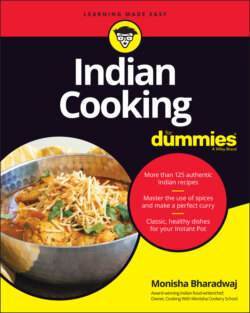Читать книгу Indian Cooking For Dummies - Monisha Bharadwaj - Страница 16
Delhi: The Mughals and Islamic influences
ОглавлениеNew Delhi is the modern capital of India. It has a cosmopolitan population of politicians, diplomats, and business officials, and the cuisine reflects the diversity of its past history. The streets are lined with stalls selling tandoor cooked foods, crisp samosas, and rich biryanis. As evening turns to dusk, the city’s rich and famous dress up in their best silks to attend countless cocktail and dinner parties where tables creak with the best of Mughlai food.
This is a legacy left by the Mughal rulers who reigned over a large part of India from their capital Delhi from 1526, before the British took over. The cuisine was influenced by Persian and Turkish cooking as the rulers had ties with these cultures (the official language of the Mughal rulers was Persian). Today’s korma, biryani, kofta, and kebab are a Mughal legacy and have become mainstream North Indian dishes. Traces of Mughlai cooking can be seen in some southern cities such as Hyderabad, where the Mughal Empire extended to.
Because of the Islamic origins of this style of cooking, and in reverence to the many Hindu courtiers that advised the kings, pork and beef dishes were not included. Indian restaurants offering Mughlai food today serve it up as a mild, delicious cuisine based on creamy or nut-based curries laced with dried fruits and rich spices, such as saffron and cardamom. Desserts are flavored with rose water and pistachios, and the recipes are typically richer than those found in other parts of India. This is an indulgent cuisine; in India, it’s seen as a treat.
